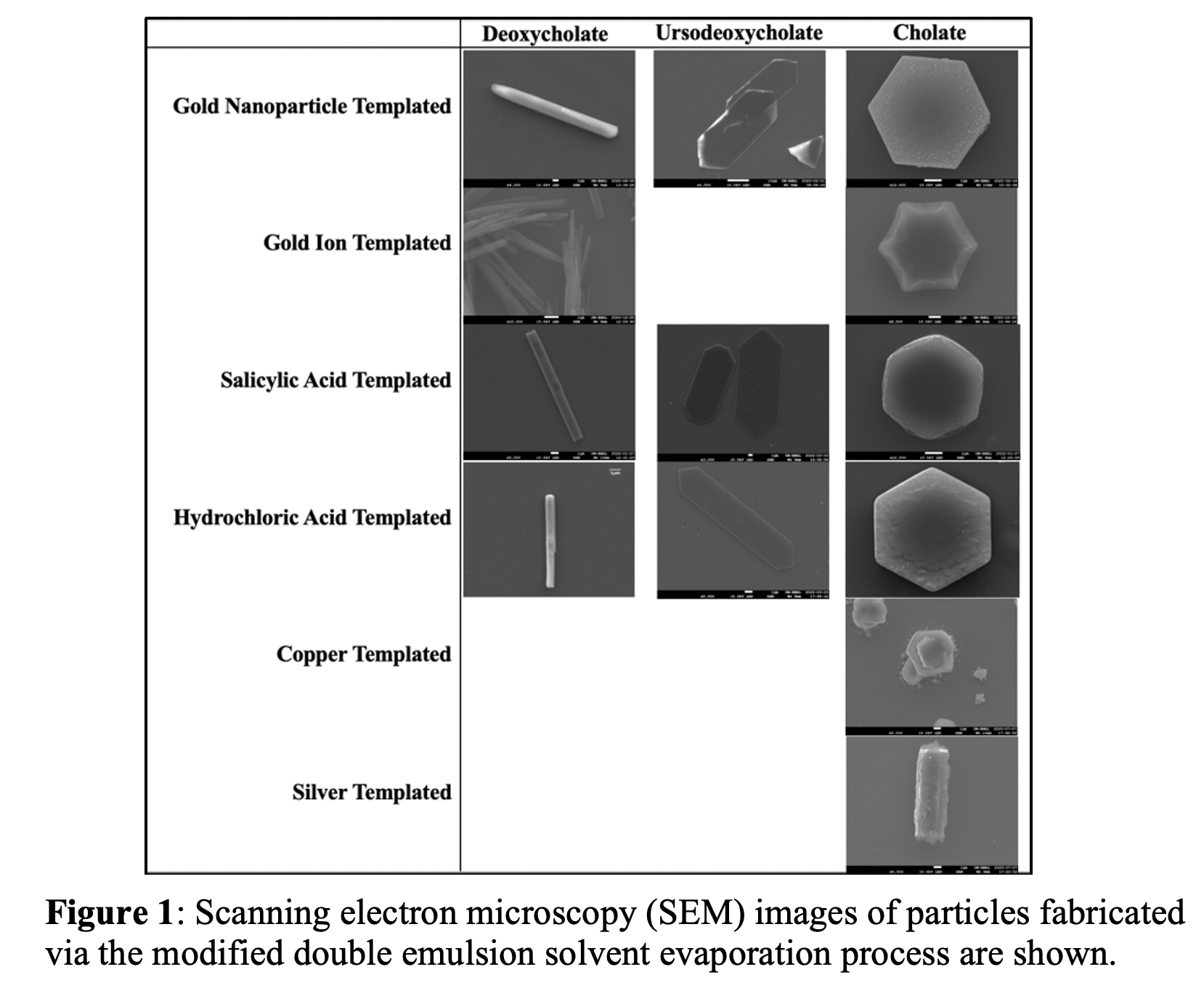(555c) Fabrication and Characterization of Composite Particles for Controlled Release Drug Delivery Applications
AIChE Annual Meeting
2022
2022 Annual Meeting
Food, Pharmaceutical & Bioengineering Division
Micro- and Nano-Scale Technologies in Life Sciences I
Wednesday, November 16, 2022 - 4:06pm to 4:24pm
Many orally and intravenously delivered drugs suffer from issues such as high clearance rate, low bioavailability, and systemic side effects. As such, there has been a push to develop targeted and controlled release drug delivery systems. These systems typically center on a polymeric or liposomal carrier, into which the drug of choice is loaded. However, these systems are primarily composed of the polymer or lipid material and are difficult to implement in the clinic due to their poor stability and negative side effects of the carrier. Recently, a means to fabricate metal-templated composite microparticles out of two key bile salts, cholate and deoxycholate, was discovered, whereby the particle itself was composed of greater than 95% (w/w) the active drug material. Our work aims to understand the mechanism underlying this process and to expand on it, where we utilize a modified double emulsion solvent evaporation process. We hypothesize the charge distribution on the ester group at carbon 17 of the steroid backbone interacts with the metal or acid within the inner water phase to form a particle nucleus, thereby initiating a growth mechanism to create particles on the micron scale. Thus, we anticipate metals or acids that allow charge transfer, when incorporated into the inner water phase, can facilitate this templating process. Ethyl acetate is used as the oil phase and the drug of choice is used in the outer water phase. Drugs in the outer water phase consist of water-soluble bile salts. The metal or acid, via the oil/water interface, then initiates the nucleation/growth mechanism. Particles have been successfully fabricated using a variety of bile salts. These particles, seen in Figure 1, have exhibited controlled release properties in a DI water degradation study. Furthermore, particles encompass the nucleating material, such as gold or salicylic acid, within the particle matrix. Bioactivity assays completed via ELISAs have shown that particles release active drug molecules. This work is significant as it provides alternative strategies for particle drug delivery systems that do not involve a polymeric or liposomal carrier. Future work will center on optimizing fabrication parameters to better control particle size, shape, and drug release.


